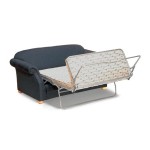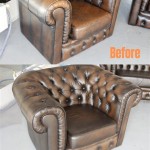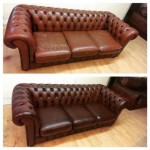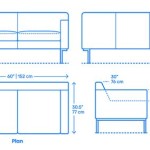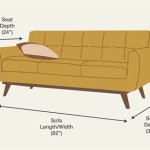Sofa Built In: Maximizing Space and Style
Built-in sofas offer a compelling blend of functionality and aesthetics, providing a customized seating solution that seamlessly integrates into a room's architecture. They present an opportunity to optimize space, particularly in smaller homes or apartments, while simultaneously adding a touch of sophisticated, tailored design. This article will explore the various aspects of built-in sofas, including their benefits, design considerations, material choices, and installation process.
One of the primary advantages of built-in sofas is their space-saving potential. Unlike freestanding sofas, which require space around them for movement and visual breathing room, built-in versions utilize wall space efficiently. This is particularly beneficial in narrow rooms or areas with limited floor space. By eliminating the gaps between the sofa and the wall, they create a sense of streamlined organization and maximize usable square footage. They can also be designed with integrated storage underneath, further optimizing space utilization and minimizing clutter.
Built-in sofas offer unparalleled design flexibility. They can be customized to fit any space, from small alcoves to expansive living areas. Homeowners can dictate the length, depth, and height of the sofa, ensuring a perfect fit within the existing architecture. This level of customization extends to the design details as well. Armrests can be incorporated, omitted, or designed in unique shapes and sizes. Backrests can be tailored for optimal comfort and support, ranging from simple, straight backs to more elaborate, contoured designs.
The choice of materials for a built-in sofa significantly impacts its appearance, durability, and comfort. A common choice is wood, offering a classic, timeless aesthetic. Different wood species, such as oak, walnut, or cherry, can be selected based on the desired look and the existing décor. Upholstery options are equally diverse, ranging from durable fabrics like linen and velvet to luxurious leather. The choice of upholstery should consider factors such as durability, maintenance requirements, and the overall style of the room. Cushion filling plays a critical role in comfort. Options include foam, down feathers, and synthetic fibers, each offering a different level of firmness and support.
The installation process for a built-in sofa typically involves a combination of carpentry and upholstery skills. If the sofa incorporates storage, additional framing and construction may be required. Accurate measurements and precise cuts are essential for ensuring a seamless fit within the designated space. The frame is typically constructed first, followed by the installation of the upholstery and cushions. Professional installation is often recommended, especially for complex designs or for those lacking experience in carpentry and upholstery.
Lighting plays a crucial role in enhancing the functionality and ambiance of a built-in sofa area. Incorporating task lighting, such as wall-mounted sconces or adjustable floor lamps, can create a comfortable reading nook. Ambient lighting, through strategically placed recessed lights or overhead fixtures, can illuminate the entire area and create a warm, inviting atmosphere. Accent lighting, such as strategically positioned spotlights, can highlight specific design features of the sofa or draw attention to artwork or other decorative elements in the surrounding space.
Integrating a built-in sofa with other design elements can further enhance its aesthetic appeal and functionality. Built-in bookshelves flanking the sofa can create a cozy library corner, while incorporated side tables can provide convenient surfaces for drinks and books. The color palette of the upholstery and surrounding walls should be carefully considered to create a harmonious and visually appealing space. The use of contrasting colors can create a bold statement, while complementary colors can foster a more serene and unified aesthetic.
Maintenance of a built-in sofa is crucial for preserving its appearance and longevity. Regular cleaning of the upholstery, according to the manufacturer's instructions, is essential for removing dust, dirt, and stains. Wood frames can be cleaned with a damp cloth and a mild wood cleaner. Periodic inspection of the frame and upholstery for any signs of wear and tear is also recommended. Addressing any issues promptly can prevent further damage and extend the lifespan of the sofa.
Built-in sofas represent a versatile and stylish solution for maximizing space and enhancing the aesthetic appeal of any room. Their customizable nature allows for seamless integration into diverse architectural styles and personal preferences. Careful consideration of design, materials, and installation ensures a functional and aesthetically pleasing addition to any home.

10 Houses With Sofas Built In To The Architecture Archdaily

10 Houses With Sofas Built In To The Architecture Archdaily

10 Houses With Sofas Built In To The Architecture Archdaily

Bespoke Built In Sofa For Invermayhouse Designed By Moloneyarch The Fine Craftsmen At Spence Join Couch Furniture

Idea To Steal Built In Sofas Apartment34 Sofa Sunken Living Room Design Inspiration

10 Built In Sofas For Lounging Style

Lounge In Style 8 Built Sofa Ideas

Designing An Adaptable Built In Small Space Sofa The Tiny C Cottage

Built On Couch With Storage In Sofa House Interior Design

10 Houses With Sofas Built In To The Architecture Archdaily



